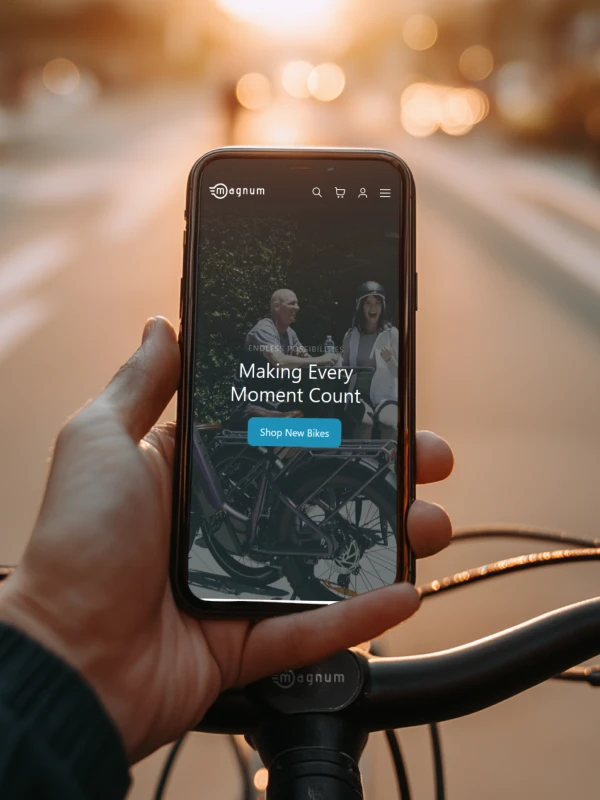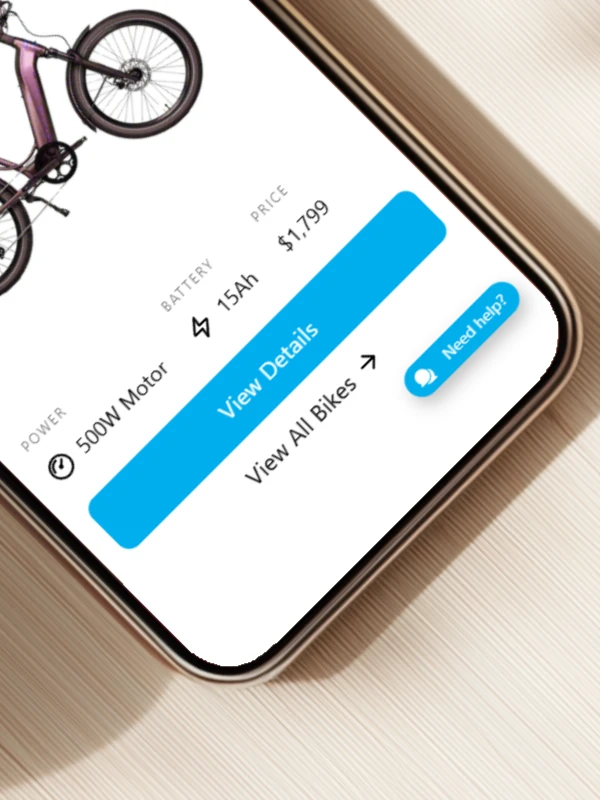




Magnum Bikes' request was to launch an MVP (Minimum Viable Product) version of their Shopify store within just 1–2 months — without starting from scratch.
Keep reading to discover how Gloross stepped in, took control of the project, and elevated Magnum Bikes’ digital presence — driving major improvements in speed, usability, and long-term scalability!
Magnum Bikes had the products, the brand, and the market. What the company lacked, however, was a fully functional and conversion-focused e-commerce store.
With demand for electric bikes on the rise, the business needed to strengthen its digital presence to meet customer expectations and support its long-term growth strategy. Beyond simply launching an online store, Magnum Bikes aimed to implement a Shopify+ Solution that reflected their premium positioning, streamlined user experience, and enhanced the addition of new features over time.
This marked the beginning of our collaboration — focused on launching a functional MVP in the short run, while laying the foundation for a robust and scalable e-store.
When we began work on the project, we encountered several critical issues that needed to be addressed before any progress could be made at all. Namely:
Our initial audit revealed that the design provided by the previous agency was not compatible with Shopify’s structural logic and best practices. Significant revisions were needed to ensure platform compatibility and proper functionality.
The development work we inherited from the new Shopify setup was rather chaotic and difficult to maintain. Many sections were either broken, hard to update, or not running properly. Hence, we had to do a massive cleanup before moving forward.
There was a significant amount of legacy code from earlier stages of development, which led to backend clutter, page layout issues, and unnecessary confusion. It became difficult to distinguish which elements were still active and which were unusable. All of this slowed down the migration process and increased the chance of bugs.
The new site was not optimized for performance. Images, scripts, and other assets were too heavy, which slowed down page speed. As a result, the browsing experience was not smooth, and the site's SEO visibility was negatively affected.
The former setup had not been built with flexibility in mind. Instead of using reusable sections that could be applied across multiple pages, each part of the site was created separately. This made content updates more time-consuming and hindered future development, as new features or layouts had to be built from scratch.
Some features were simply not working the way they should. On mobile and tablet, several sections appeared broken — buttons were misaligned, page structures were collapsing, and certain elements were not showing up at all. This led to an inconsistent experience for users and made the site feel less reliable overall.
Although a new setup and redesign was clearly needed, the existing website had to remain live and functional throughout the process. This meant we had to work in phases — carefully planning each update to avoid disrupting the customer experience or interfering with day-to-day business operations.

Our work with Magnum Bikes started with a clear focus: fix what was broken, deliver a working version of the website quickly, and then improve the entire store — gradually, but properly!
Before anything else, we had to get the project back on track. We prioritized fixing broken features, cleaning up the most problematic sections, and ensuring that the website could perform basic functions seamlessly. This was essential in order to meet the client’s goal of launching a Shopify MVP within just 1–2 months — without starting from scratch or wasting the progress already made!
Once the MVP was live, we moved into a full website revamp. Over the course of one year, we redesigned the entire site — page by page and section by section.
We worked on key areas like:
The goal was to improve both the look and the feel of the store while building a clean and scalable structure that would support future development. We also paid close attention to speed and usability, making sure every update contributed to a more consistent experience and higher conversion rate.
Instead of relying heavily on third-party apps, we used custom code wherever possible. This reduced the number of bugs, cut unnecessary app costs, and gave us more control over performance! The result was a faster, lighter, and more stable store.
As the core design and structure were being improved, we also added a few custom features to support the customer journey and drive more engagement. These included:
Both features were fully integrated into the new design and aligned with the overall UX strategy.
Our collaboration with Magnum Bikes started under pressure — with a partially built store, a tight deadline, and a long list of issues to resolve. But by taking a structured, phased approach, we not only delivered a working MVP within 1–2 months, but also redesigned and improved the entire store over the following year.
We introduced a more scalable theme, improved performance, and cleaned up the codebase — all while keeping the website live and functional throughout the process.
By the end of this journey, all essential components had been rebuilt and optimized. The result was a Shopify Plus Store that worked better, looked sharper, and was much easier to update and grow over time!

